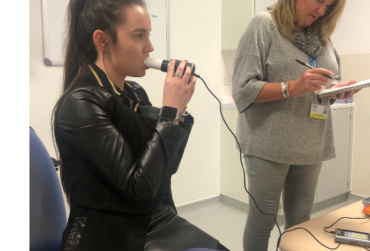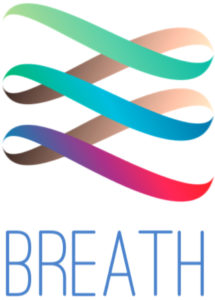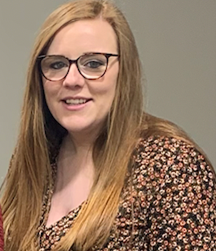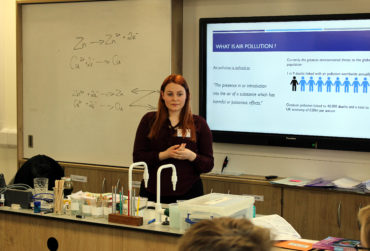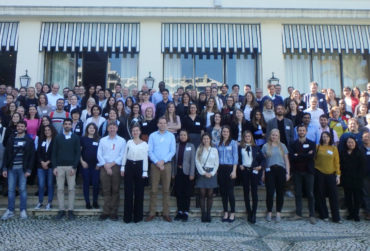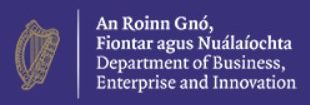Living with COPD
A sufferer talks about how COPD has affected his life, the concerns about lack of a cure and the degeneration process, the positive help being provided by the NHS, the importance of self-help to ease the strain of day-to-day living and trying to turn a negative into a positive.
COPD is an acronym for Chronic Obstructive Pulmonary Disease. It’s quite a mouthful but the name is worth looking at in more detail. The key word is Pulmonary as it relates to your lungs. So, in lay-man’s terms, it is a disease that reduces your lung function and causes breathlessness. However, it is much more than breathlessness. It affects the lives of those who have it in many and varied ways and I suppose that is why they have used the word Chronic. The Obstructive bit is to do with the airways in your lungs becoming narrowed, blocked or destroyed completely, thus obstructing the flow of oxygen getting to all parts of your lungs. In my case smoking is to blame, although the medical experts will explain that other things, like working conditions and the environment, can be contributory factors. It can be hereditary as well.
I am 77 years of age, smoked an average of six to eight small cigars most days for 35 years and was diagnosed with Emphysema approximately 15 years ago. Emphysema is one of a number of diseases that come under the COPD umbrella. Others include Asthma, Chronic Bronchitis and Pneumonia.
I have now stopped smoking and am one of over one million people in the UK who are known to have the disease. The big problem is the damage to the lungs is irreparable, there is no cure and the effects of COPD get worse as time goes on. However, thanks to the NHS, there is a lot help out there. I have been using inhalers and other medication since I was diagnosed and they have helped a lot.
I have just completed a Pulmonary Rehabilitation course at the New Victoria Hospital in Glasgow and found it very worthwhile. There were around 20 in my class. It is run by a team of physiotherapists, nurses and fitness instructors who specialise in COPD. The course runs for six weeks. I attended twice a week and each session lasted one-and-a-half hours. The first half hour of each session is educational, learning about the various inhalers that are available, how to use them properly, how to control a breathing panic attack, what to do when a chest infection sets in and the big one – THE SPIRAL. These are very important issues and are critical in managing your life more effectively. The other important aspect of the programme is you hear the experiences and concerns of other COPD sufferers, thus the reason for sharing my own experiences in the hope that it may be of some help.
Then it’s off to the gym to do exercises! Their faces were a picture, including mine. In fairness we were told about the exercise classes while being assessed for the programme, but at a time when you are struggling to get up the stairs, pottering about in the garden or dragging out the rubbish bins, the thought of doing exercises becomes a bit scary. I’ll come back to the gym in a moment. Let me tell you about this breathlessness that is a big part of having COPD.
This is a different sort of breathlessness. Not like the days when you were able to run for a bus, play a sport or ride a bicycle at speed. Then, you pushed yourself to the limit. That was possible because your lungs were 100 per cent functional and you were able to get your breathing back to normal quite quickly. With COPD your lungs may only be 50 per cent effective so it is understandable that it takes a lot more time to recover from breathlessness, and then you are still only at 50 per cent capacity – or maybe less. That is when the body gets agitated and you start to breathe much more quickly- short, fast intakes of breath. This can bring on a panic attack. The blue inhalers (Ventolin) can help in this situation and at the rehab sessions you are taught recovery breathing techniques. You stop doing what you are doing, and where possible, choose one of the following. Sit down and lean forward with you hands on your knees, lean forward with your back to a wall, lean sideways against a wall, lean forward against a ledge or wall, if possible, lie down on your side with pillow support or at a table with your arms outstretched and lean forward. In all these positions breathe in slowly through your nose and out slowly through your mouth. After five or six deep, slow breaths you will start to relax again. Don’t feel self-conscious about doing this. You need to pull yourself out of a panic attack as quickly as possible as it becomes exhausting.
Earlier I mentioned THE SPIRAL. Breathlessness is just the start of it. It’s like throwing a pebble into a pond, triggering the ripple effect and you go on a downward spiral. Remember, COPD is not curable and it gets worse as time goes on. Thankfully, I can still take our dog for a walk as long as I avoid inclines and hope he does not spot a fox and makes a dash for it! Then I am in trouble and panic sets in. Quite often that is when I have to stop and use one of the recovery techniques or the blue inhaler. A small amount of exertion can bring on breathlessness and with this comes tiredness because you have to work harder to breathe. You then become lethargic and everything seems to be an inconvenience and you lack enthusiasm. To overcome the tiredness you take a rest and quite often fall asleep. Then the mental side of things start to kick in. You begin to feel inadequate, you have to ask others to help with some chores and your pace of life slows dramatically which is hard to accept especially when you have dashed around at 120 mph for most of your working life. I used to love travelling but now I have lost the appetite because of the hassle of going through airport checks and worrying about lack of breath and panic attacks etc. etc. Long haul flights are not possible now as I picked up chest infections the last few times. This is particularly sad as my elder son lives in San Francisco. You move down the spiral a little further, mind games continue and you begin to feel worthless, not the man you used to be. When I think on all of the above I can see how some can slip into depression. Thankfully, I haven’t reached that point and will fight hard to make sure I don’t.
COPD does not have the high profile of other diseases like cancer, stroke and heart and now Alzheimer’s, yet it is responsible for 30,000 deaths in the UK every year. It’s the fifth biggest killer. It is a silent, breathtaking disease that creeps up on you and can eventually throw your life into a state of almost helplessness. That’s why sufferers have to work really hard to do as much as they can to make living with the illness a bit more tolerable.
Here’s a story that might help put things into perspective. It’s about a young man I met in the early 80s while producing a television programme about people who were innocently caught up in bomb blasts during what is now know as “The Troubles” in Northern Ireland. The programme title was “They Made News for a Day” and I wanted to know what happened to these people who had become statistics during the twenty-odd years of mayhem. Robert, not his real name, went into a pub on the outskirts of Belfast to pick up a set of keys and when he walked back outside a massive car bomb went off close by. He lost both his legs at the knees. He was 21 years old. When I asked him what was the most difficult time during his recovery and rehabilitation, he said getting out of bed in the morning. In Robert’s words, “I felt as snug as bug in a rug, I was warm and comfortable, my stumps weren’t hurting and I really didn’t want to get out of bed. I wanted to stay there all day but I knew I couldn’t because I had yet another hospital appointment and had to get going.” What has this got to do with COPD I hear you ask? Well, I think there is a parallel, although, in comparison, losing both your legs is dramatic. I quite often have the same thoughts when I wake up in the morning. I am warm and comfortable, my breathing is relaxed and panic attacks seem far away, until I walk into the bathroom and start to plan my day with the help of my purple inhaler (Fostair). At least I have my legs to get me to the bathroom!
Everything is relevant and this is where I take you back to the gym. As you slip into this downward spiral and you are starting to become a couch potato, watching far too much television and perhaps feeling sorry for yourself, it is now time for YOU to get up and do something about it. Your muscles are starting to waste away because of inactivity and the only way up out of this spiral is to exercise and get the muscles working again. The rehab team have given a lot of thought to the exercise programme. We’re not talking about pumping iron, pounding the tread mill or getting on a rowing machine. No, the exercises are thoughtfully planned for people with COPD. The entry level is designed to fit your capabilities. Yes, at first you might think it is too difficult but you must persevere and realise exercising is going to help. It won’t cure your illness but it will help cope with your day-to-day activities a lot better. It is a progressive programme and you do the exercises at your own pace. There are eight routines – leg extensions, arm weights, steps-up, pole raises, sit to stand, knee lifts, bike riding and walking. You start off doing 12 of each exercise, apart from the bike which you ride for 3-6 minutes and walking 3-6 laps of a corridor. When you are ready, you double the leg and arm exercises to 24 and by the end of the six weeks you should be doing 36. That’s when I really felt my muscles getting sore. The exercises were working and I felt good about it. So good, in fact, I continued to do them at home. It is really important to do this to avoid heading back to THE SPIRAL! By strengthening your muscles you are able to do things more easily and reduce the stress levels. The team have put me in touch with a vitality programme near where I stay and I will get involved in the New Year. Unfortunately as I write this I have picked up another chest infection. However, my GP gave me an emergency supply of antibiotics and by taking the treatment early, I hope one course will work this time and I’ll get back to the exercises.
The rehab team has some helpful advice about chest infections. The key point is not to delay when you feel an infection coming on. If your GP gives you an emergency supply of antibiotics that’s a big help. If not, it is important you tell the receptionist at your surgery that you have COPD and you need medication quickly. They should react to this and the same applies to out-of-hours services. When you have a chest infection your breathing becomes even more restricted because of coughing and the need to clear phlegm/mucus from your tubes. I also got some good practical advice about protecting yourself when out in cold and windy conditions. There is a natural tendency to wrap a scarf tightly around your mouth and nose, but this restricts your breathing. Try arranging your scarf about six inches from your nose and mouth to act as a wind break. The warm air hits the scarf when you exhale and reduces the severity of the cold air when you inhale. Try it, it worked for me – until my dog saw yet another fox! Another tip is when you are drying off after a shower or a bath, use a towelling robe and pat yourself dry rather than trying to do a work-out drying your back with a towel, and yes, feeling breathless at the end of it.
It is important to think positively about doing something for yourself. I have received excellent help and support from my GP, Hospital Consultant and now the Pulmonary Rehabilitation team at the New Victoria Hospital. A lot of time and money has been ploughed into the COPD programme and we all must take advantage by making our contribution. If it helps with your day-to-day living it has to be worth it. Turn a negative into a positive. Here’s another story about Robert that might help. When he was being measured for his artificial limbs, the doctor asked what height he was before the bombing. The answer was 5ft 10 inches. “ Would you like to be six feet?” asked the doctor. “That would be brilliant. I’ll be able to get a better view at the football,” enthused Robert. Not long after that he was able to ride a horse. Now, that’s turning a negative into a positive. Walk tall Robert, and to all COPD suffers out there – onwards and upwards.
Malcolm McCalister
January 2020

